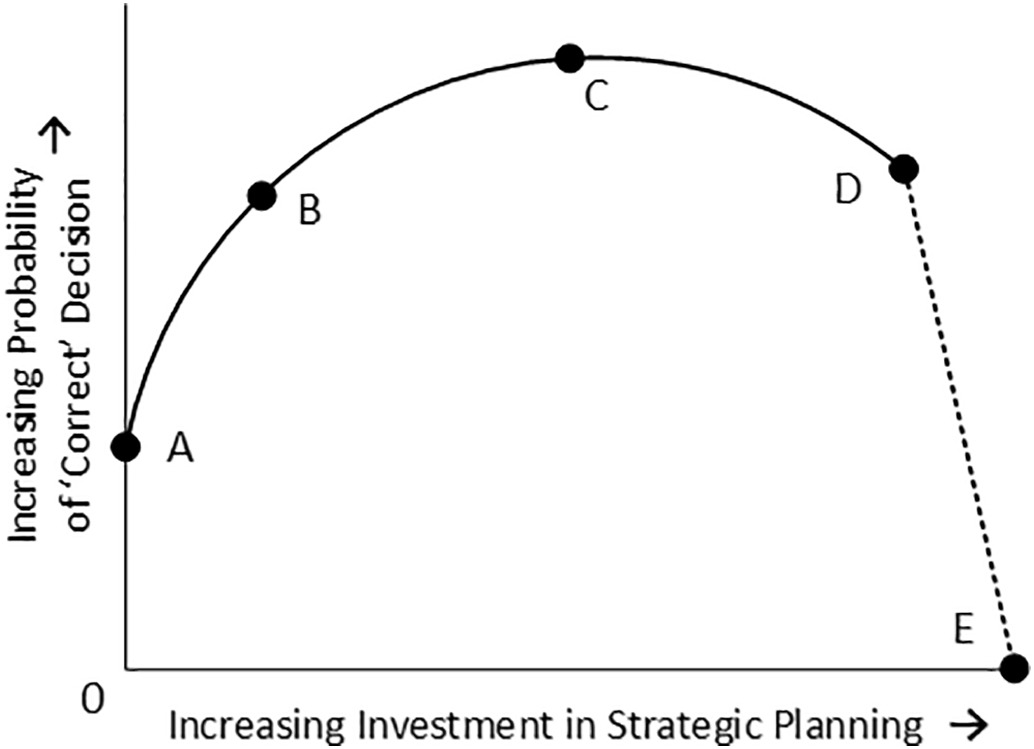What is the optimal investment in strategic planning? At what point does increasing sophisticated planning have diminishing returns or even become counter-productive? Nick Salafsky considers these questions in a recent review for Biological Conservation:

One of the more interesting meta-questions in conservation practice concerns the strategic value of strategic planning and other systematic decision support exercises. Specifically, what is the return on investment in different levels of effort in strategic planning? Fig. 1 shows a rough curve I developed in which the X-Axis is investment in strategic planning around a given decision and the Y-Axis is some measure of whether the decision was “correct” (e.g., if insufficient hindsight the decision makers are given a do-over, what is the probability that they make the same decision?).

Figure 1. Model of return on investment in strategic planning
The Y-intercept here (Point A) is greater than zero since there is some chance that the decision maker would get the right answer just by luck. I suspect that there is then a steep part of the curve (between Points A & B) where a minimal investment in strategic planning will greatly improve the probability of a correct decision. In my experience, this investment lies in framing the conceptual underpinnings of the decision being made. Do the decision-makers have a shared understanding of the situation and context of the decision? Have they agreed upon clear goals? And do they have a common theory of change about how each decision option will lead to these desired goals? Much of the power here comes from developing shared mental models across key stakeholders that enables the team of decision makers to harness the “wisdom of the crowd.” Then there is a flatter part of the curve (between Points B & C) where there is still positive, but diminishing returns to expending additional effort on strategic planning. This phase of investment generally involves trying to more precisely and quantitatively compare trade-offs between different options. It often involves handling the problem over to specialized quantitative researchers who then report back to the primary decision makers. The curve then starts to dip south (between Points C & D) when additional planning may just start to confuse the situation. Finally, the curve at somepoint plummets to the X-Axis at Point E, representing the cases when planning paralysis sets in and no decision is ever reached.
— Nick Salafsky. Strategically Investing In Strategic Planning: A review of: Kent D. Messer and William L. Allen, III The Science of Strategic Conservation: Protecting More with Less, 2018, Cambridge University Press; Cambridge UK. ISBN: 978-1-107-19193-8.


Recent Comments